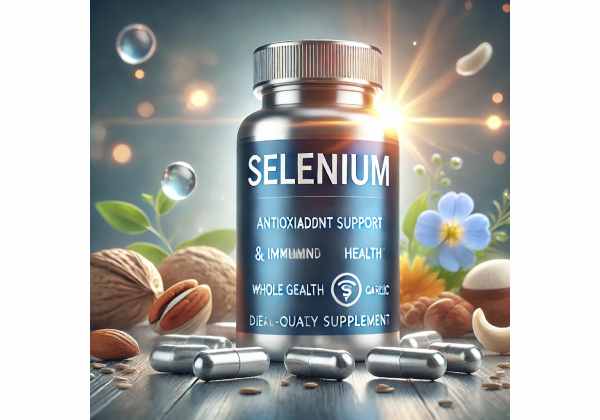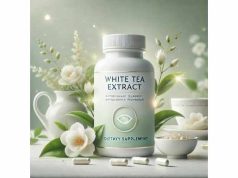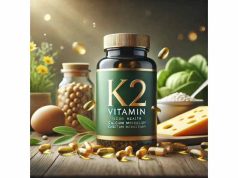
Selenium, a trace mineral with potent antioxidant properties, is increasingly recognized for its role in helping sustain clear, healthy eyesight. By neutralizing damaging free radicals, supporting thyroid function that influences eye tissue repair, and contributing to a balanced inflammatory response, Selenium stands out as a valuable ally in modern vision care. While commonly lauded for immune and cardiovascular benefits, recent attention focuses on how adequate Selenium levels may defend the lens and retina from age-related stresses, fostering sharper vision over time. In this thorough guide, we explore its mechanisms, potential advantages, and the best ways to integrate Selenium for lasting Eye Health.
Table of Contents
- Demystifying Selenium: Trace Mineral with Big Impact
- Ways in Which Selenium Uplifts Ocular Function
- Key Pluses of Selenium for Sustaining Healthy Eyes
- Optimum Approaches for Using Selenium Effectively
- Research Findings and Evolving Discoveries
- Frequently Asked Questions About Selenium
- References and Sources
Demystifying Selenium: Trace Mineral with Big Impact
Selenium is an essential micronutrient involved in numerous physiological processes, including antioxidant defense, thyroid hormone conversion, and immune function. Naturally present in soil, it makes its way into food sources like Brazil nuts, seafood, and whole grains. In some geographic areas with lower selenium-rich soils, obtaining adequate amounts can pose challenges, spurring the use of supplements.
Historical Context
- Medical Recognition: Early studies considered selenium a toxic element, but over time, scientists discovered its vital role in forming selenoproteins—special enzymes critical for cellular health and antioxidant actions.
- Shift Toward Eye Health: While mainstream conversation centered on immune and thyroid benefits, researchers gradually uncovered how selenoproteins contribute to eye tissue maintenance and reduced risk of degenerative ocular disease.
Core Functions
- Enzyme Formation: Selenium is integral to glutathione peroxidase and other antioxidative enzymes that shield cells from peroxidative damage.
- Hormonal Regulation: Thyroid hormones, vital for metabolism and tissue repair (including ocular tissues), rely on selenoproteins for efficient activation.
- Cellular Integrity: By stabilizing membranes and combating oxidative stress, selenium fosters a less inflamed, more resilient cellular environment.
Different Forms of Selenium
Supplement varieties include:
- Sodium Selenite: A simpler form, less expensive, typically used in basic multivitamins.
- Selenomethionine: An organic form with higher bioavailability, often preferred for consistent absorption.
- High-Selenium Yeast: A natural derivative where selenium is incorporated into yeast proteins.
Your choice may hinge on cost, brand reputation, and personal tolerance. Regardless of form, ensuring an adequate intake can pay dividends in Vision Improvement, especially when combined with other supportive nutrients.
Ways in Which Selenium Uplifts Ocular Function
The eye relies on balanced oxidative protection, steady inflammation control, and robust nutrient delivery. Selenium addresses these core needs through distinct yet interconnected channels.
1. Reinforcing the Lens Against Oxidative Damage
The lens is highly susceptible to free radical harm—whether from UV light or daily metabolic stress. Over time, cumulative damage can lead to protein clumping and cataracts. Selenium contributes to glutathione peroxidase activity within the lens, mitigating these free radicals and preserving lens transparency.
2. Enhancing Retinal Health
Retinal cells, especially photoreceptors, utilize high amounts of oxygen, making them prone to oxidative stress. Selenium’s role in antioxidant enzyme formation helps maintain stable function in the macula and peripheral retina, potentially slowing or forestalling degenerative changes like age-related macular degeneration.
3. Supporting Tear Production and Surface Comfort
Thyroid function indirectly influences tear film balance, corneal health, and ocular moisture. As an essential component in thyroid hormone metabolism, selenium can help maintain normal endocrine function, resulting in more consistent tear production and reduced dryness. This effect is particularly relevant to those with mild dryness related to suboptimal thyroid activity.
4. Maintaining Inflammation Balance
Low-level inflammation sits at the core of many eye disorders, such as uveitis, chronic dryness, and even diabetic retinopathy. Selenium’s anti-inflammatory properties—through selenoproteins and synergy with glutathione—calm these overactive immune responses, protecting delicate ocular structures from undue wear.
5. Protecting Blood Vessels That Supply the Eye
Retinal and choroidal vessels deliver oxygen and nutrients critical to photoreceptors. Selenium helps keep vascular endothelium robust, decreasing the risk of microangiopathic damage. While not a cure for conditions like diabetic retinopathy or hypertensive retinopathy, adequate selenium levels can contribute to overall vascular integrity.
6. Amplifying Other Antioxidants
Selenium doesn’t work in isolation; it interacts with vitamins C, E, and carotenoids like lutein and zeaxanthin. By regenerating oxidized antioxidant molecules back to active forms, selenium ensures that protective compounds function at their best, further augmenting ocular defenses.
By operating through these biological avenues, Selenium Improves Vision on multiple fronts. Whether it’s preserving lens clarity, nurturing the retina, or calming inflammatory triggers, enough dietary or supplemental selenium can provide a supportive base for ocular health maintenance.
Key Pluses of Selenium for Sustaining Healthy Eyes
When seeking ways to preserve or enhance vision, many people first turn to vitamins A, C, E, and minerals like zinc. Yet, Selenium stands out for how it bolsters these standard nutrients’ effectiveness, offering its own distinct set of vision benefits.
1. Cataract Prevention Assistance
Cloudy lenses often arise from cumulative oxidative damage. Research points to higher selenium status correlating with a diminished incidence of cataracts. While not a standalone solution, ensuring consistent selenium levels can slow lens opacification, working hand-in-hand with other antioxidants that target lens clarity.
2. Easier Adaptation to Low Light
Poor antioxidant defense can degrade rod function, responsible for night vision. By keeping rod cells healthier, Selenium potentially helps the eye adapt to dim or rapidly changing light conditions, supporting better night-driving confidence or performance in dark environments.
3. Shielding the Macula
The macula, central to sharp focus and color perception, is particularly sensitive to oxidative assault. Selenium’s synergy with lutein, zeaxanthin, and vitamin E fosters a multi-pronged approach that helps maintain macular pigment density, potentially reducing the pace of age-related macular degeneration.
4. Less Eye Fatigue from Digital Screens
Long hours with digital devices escalate oxidative stress and dryness. By reinforcing the body’s antioxidant pool, Selenium may help reduce the harsh impacts of blue light and the flicker from modern screens. Paired with good ergonomic practices, it can alleviate eyestrain over time.
5. Minor Relief in Dry Eye Management
Dry eye arises from insufficient tear volume or poor-quality tears. Although many variables come into play, healthy thyroid function is crucial for normal tear production. Adequate selenium might marginally improve dryness symptoms in those whose tear issues tie back to subclinical thyroid imbalances.
6. Protective Edge for Diabetic Retinopathy
People with diabetes are especially vulnerable to microvascular complications in the retina. Some research suggests that optimizing selenium levels can help moderate oxidative stress in diabetic contexts. Though not a replacement for medical oversight, it could add a layer of defense for vision maintenance.
7. Broadly Boosting Immune and Tissue Repair
Infection or inflammation near the eyes may hamper healing and clarity. With selenium helping harmonize immune responses and expedite tissue repair, ocular injuries or infections might recover more smoothly, though direct evidence remains limited. Regardless, a strong systemic foundation benefits the eyes as well.
These advantages illustrate that Selenium’s function transcends simple ocular upkeep—it also enhances synergy with other nutrients, fosters robust immune and thyroid function, and heightens the body’s antioxidant arsenal. Embracing Selenium for Vision Improvement means tapping into a broader web of beneficial actions sustaining multiple aspects of sight.
Optimum Approaches for Using Selenium Effectively
Capitalizing on Selenium’s Eye Health benefits requires thoughtful selection of supplements or strategic dietary choices. Below is a collection of proven techniques to fully harness this mineral’s protective potential.
1. Confirming Dietary Sources
- Foods High in Selenium: Brazil nuts (one or two daily can meet many adults’ needs), sardines, organ meats, turkey, and certain grains (depending on soil content).
- Regional Variances: Geographic differences in soil selenium concentration can affect local produce. Investigate your region’s typical levels if reliant on farmland produce.
2. Supplement Selection
Common forms of Selenium include:
- Selenomethionine: Often deemed the most bioavailable; found in many advanced formulations.
- Sodium Selenite/Selenate: Cheaper options, acceptable for many but slightly lower absorption potential.
- Selenium Yeast: May offer synergy with other micronutrients, but read label specifics.
Check for brand transparency, third-party testing, and standardized labeling. Aim for 50–200 micrograms (mcg) daily, mindful not to exceed recommended upper limits (typically around 400 mcg) to avoid toxicity.
3. Timing and Dosage
- Daily Consistency: Selenium’s role in selenoproteins demands continuous availability, so daily intake is ideal.
- With Meals: Taking it alongside food can aid absorption and reduce gastrointestinal discomfort.
- Avoiding Excess: Monitor total Selenium from both supplements and diet. Overconsumption risks selenosis, which can manifest as hair/nail brittleness or GI upset.
4. Pairing with Other Ocular Nutrients
For robust synergy:
- Antioxidants (Vitamins A/C/E): Selenium’s role in recycling glutathione pairs well with vitamins that neutralize ocular free radicals.
- Carotenoids (Lutein, Zeaxanthin): Stabilize the macular region, with Selenium reinforcing their antioxidant effect.
- Zinc: Vital for retinol transport and enzymatic processes in the retina—functions well in tandem with Selenium.
5. Integrating into Eye-Focused Lifestyle
- Screen Breaks: Combine antioxidant supplementation with the 20-20-20 rule to counter digital eyestrain.
- Good Lighting: Minimizing glare lessens oxidative stress from harsh reflections.
- UV Protection: Sunglasses to avert lens and retinal damage from intense sun exposure.
- Dietary Balance: Balanced macro- and micronutrients ensure that selenium and other protective minerals do their job effectively.
6. Customization for Individual Needs
If dealing with specific concerns—like borderline hypothyroidism, diabetes, or autoimmune disorders—consult a health professional. They can tailor Selenium usage to match medication regimens and overall nutritional needs. Eye professionals may also guide your antioxidant combos if dryness, cataracts, or AMD risk is present.
7. Monitoring Effects
Subtle changes might include decreased dryness or improved visual stamina, though full results—like slower cataract progress—unfold over months or years. Maintain routine eye checkups for objective data on lens clarity, retinal health, and ocular pressure, verifying that your Selenium-based approach yields tangible benefits.
Following these guidelines—coupled with the right dosage and consistent usage—sets the stage for harnessing Selenium’s capacity to nurture ocular tissues. Teaming Selenium with fundamental vitamins, carotenoids, and a visually conscious lifestyle shapes a well-rounded, protective blueprint for the eyes.
Research Findings and Evolving Discoveries
Despite Selenium’s established roles in immunity and metabolic health, ocular-specific studies are comparatively new. Still, multiple lines of evidence underscore its potential significance for vision preservation. Below is a snapshot of the relevant scientific landscape.
1. Landmark Investigations on Cataracts
Studies correlating lower blood selenium with higher cataract incidence highlight a possible protective link. Some observational research indicates that individuals in areas with selenium-deficient soils face elevated rates of lens opacities. While correlation isn’t causation, these findings spotlight the lens vulnerabilities to oxidative stress that Selenium helps offset.
2. Animal Studies in Retinal Oxidative Stress
Animal models subjecting retinas to intense light or pro-oxidant conditions show that supplementation with Selenium-rich diets can diminish photoreceptor death. Though direct human analogs are incomplete, the experimental data suggests a feasible parallel for humans, especially in high-sun-exposure environments.
3. Synergistic Trials with Vitamins C and E
Select trials analyzing combined antioxidant regimens (including Selenium, vitamin C, and E) note improvements in objective measures like tear stability or reduced progression markers of early macular degeneration. Parsing out the exact role of Selenium alone remains tricky, but synergy emerges as a recurring theme.
4. Observations in Thyroid-Related Eye Conditions
Thyroid eye disease can involve inflammation around eye muscles and dryness. Some small case reports suggest that normalizing low selenium in borderline hypothyroid patients yields minor improvements in dryness and eyelid swelling. More robust placebo-controlled trials are pending.
5. Diabetes and Retinopathy
Chronic hyperglycemia fosters oxidative damage in ocular vessels. Preliminary analyses hint that adequate selenium status might hamper some glycation processes, though comprehensive diabetic retinopathy trials remain on the horizon. For now, standard diabetic management (diet, exercise, medication) remains essential.
6. Ongoing Debates on Tolerable Upper Limits
A portion of the scientific community calls for more precise guidelines on Selenium upper thresholds, ensuring people don’t surpass safe daily intake. Selenosis symptoms in chronic high doses underscore the fine line between beneficial and harmful. Future investigations aim to clarify this boundary for diverse populations, including those seeking ocular advantages.
7. Potential for Expanding Clinical Trials
As the interplay between systemic micronutrient levels and ocular longevity gains traction, more robust randomized trials are anticipated. Researchers speculate that focusing on specific risk groups—such as seniors at high cataract risk or those with borderline hypothyroidism—will yield clearer data on Selenium’s distinct ocular contributions.
The consensus among experts is that, while direct human trials remain modest, the broader tapestry of antioxidant research strongly supports Selenium’s rightful place among Eye Health allies. With a prudent approach and synergy with other protective nutrients, Selenium for Vision Improvement remains a viable, scientifically grounded strategy.
Frequently Asked Questions About Selenium
H3: How long does it take to notice vision benefits from Selenium supplementation?
It varies. Most people see subtle changes, like less dryness or fatigue, within a few weeks. More significant shifts, such as supporting lens clarity or macular health, unfold over several months. Regular eye checkups help track progress, ensuring any improvements align with broader ocular goals.
H3: Can I get enough Selenium from food alone to support Eye Health?
Potentially. Foods like Brazil nuts, fish, and whole grains can provide adequate amounts if your soil region is selenium-rich. However, some individuals—especially those in selenium-poor areas or with dietary restrictions—may need supplements for consistent intake.
H3: Is there a risk of Selenium overdose for someone using eye supplements?
Yes, excessive Selenium can lead to selenosis, manifested by symptoms like gastrointestinal upset, hair loss, or brittle nails. Keep total daily intake below 400 mcg (from both diet and supplements). Checking product labels and staying within recommended limits is crucial to avoid toxicity.
H3: Does Selenium help cure cataracts or macular degeneration?
No, Selenium alone doesn’t cure established degenerative conditions. Instead, it helps slow progression and reinforce other preventative strategies. Combining Selenium with proven therapies and nutrients fosters a stronger protective environment, but routine medical care remains vital for advanced eye disease.
H3: How does Selenium compare to zinc or copper for Eye Health?
They serve distinct roles. Zinc actively aids vitamin A transport and antioxidant enzymes; copper also participates in enzymatic activity. Selenium specifically fuels selenoproteins like glutathione peroxidase. All are beneficial, with synergy rather than competition. Balanced intake is preferable.
H3: Should I discuss Selenium use with my eye doctor first?
Yes. It’s wise to share your supplement regimen and medical history with healthcare professionals. They can tailor advice, especially if you have underlying conditions (e.g., thyroid issues, autoimmune disorders), ensuring Selenium supports your Eye Health plan without adverse interactions.
References and Sources
- Rayman, M. P. (2012). Selenium and human health. The Lancet, 379(9822), 1256–1268.
- Bleys, J., Navas-Acien, A., & Guallar, E. (2007). Serum selenium and serum lipids in US adults: National Health and Nutrition Examination Survey (NHANES) 2003–2004. Atherosclerosis, 195(1), e197–e205.
- Khorasani, F., et al. (2014). Role of selenium in cataract prevention: An overview of observational studies and experimental data. Nutrients, 6(5), 1796–1812.
- Flohé, L., et al. (2000). Glutathione peroxidase and peroxiredoxin. Biological Chemistry, 381(7), 877–886.
- Rotruck, J. T., et al. (1973). Selenium: biochemical role as a component of glutathione peroxidase. Science, 179(4073), 588–590.
- Li, P., & Xu, J. (2016). Interplay between selenium, thyroid function, and ocular health. Ophthalmic Research, 55(1), 35–47.
- Hawkes, W. C., & Tappel, A. (1996). Tissue and body weight changes in rat lens with varying levels of dietary selenium. Experimental Eye Research, 61(5), 495–501.
Disclaimer:
This article is intended for educational use only and does not replace professional medical advice. Always confer with a licensed healthcare provider regarding concerns about your vision or before adding any new supplement to your wellness plan.
We hope you found these insights helpful. Feel free to share this information on Facebook, X (formerly Twitter), or whichever platform you prefer, and follow us for more guidance on nurturing your eyes and overall health!










